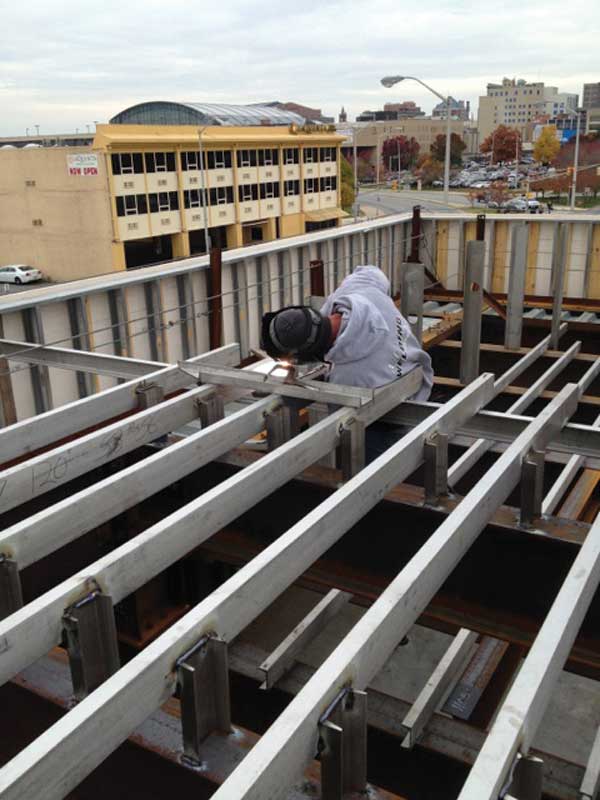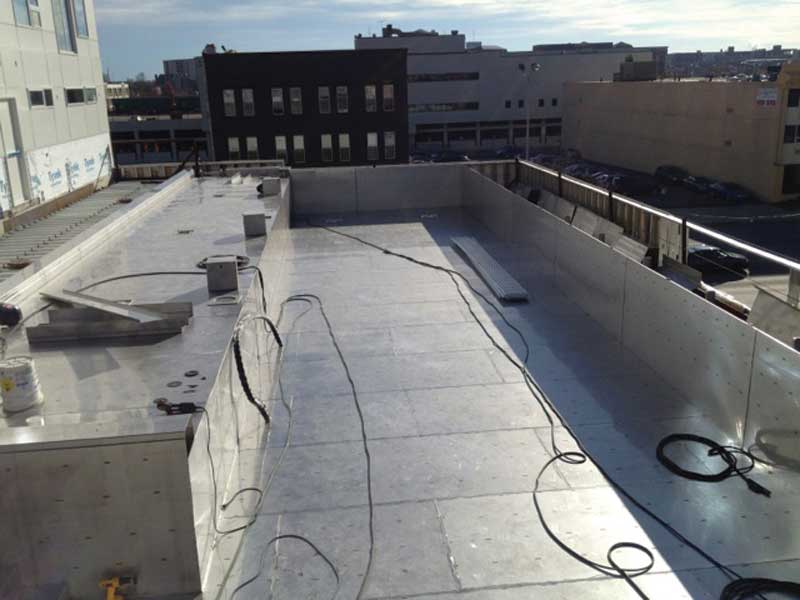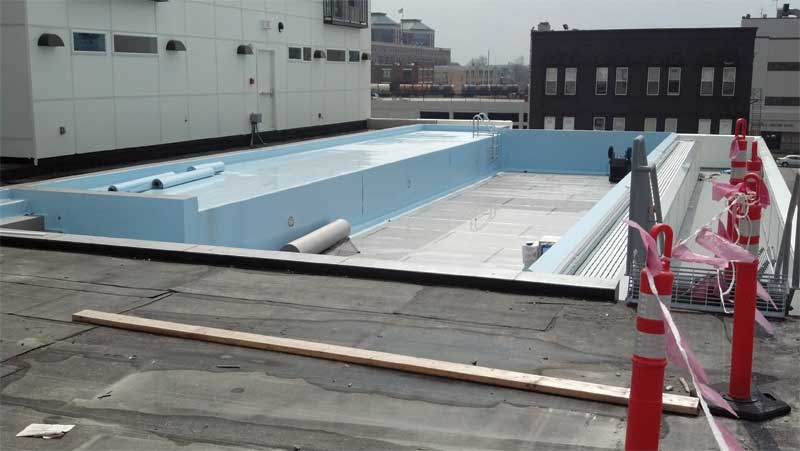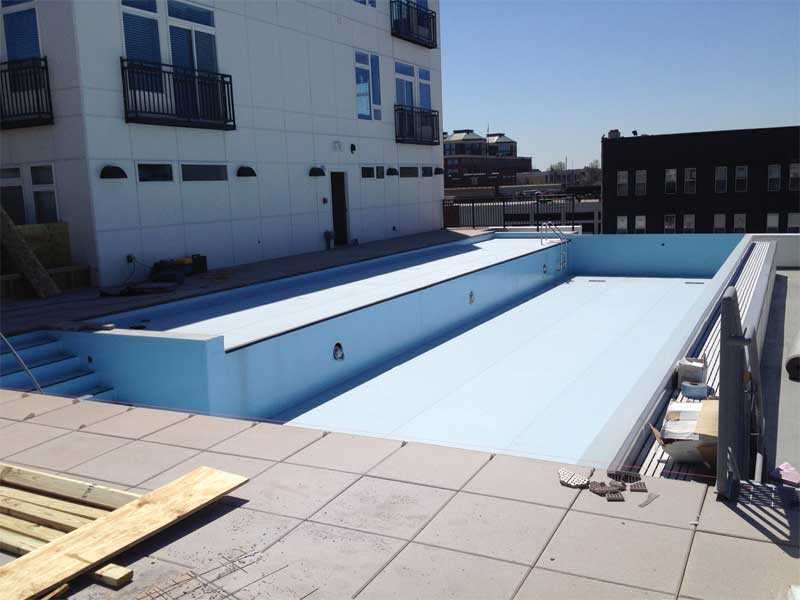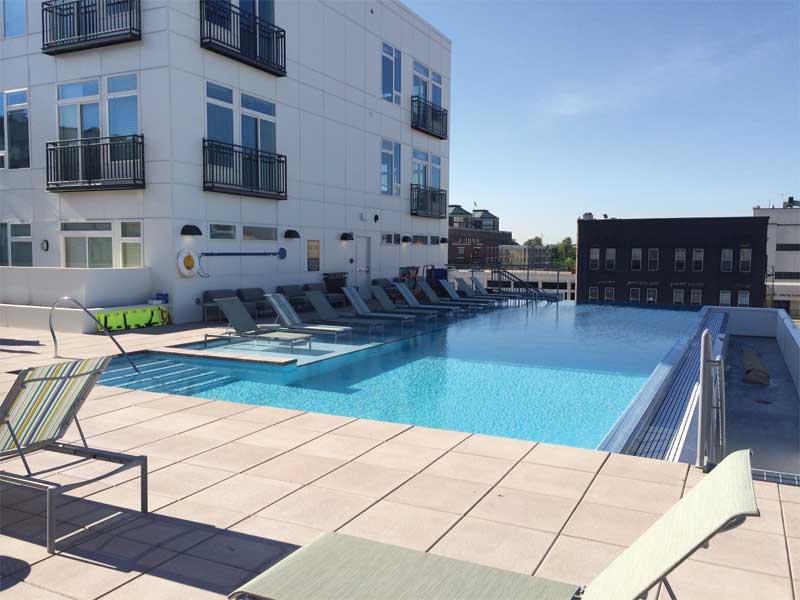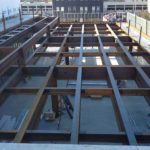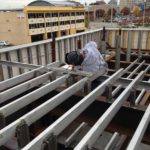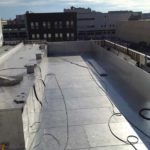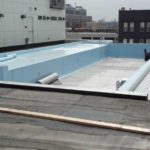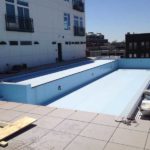Infinity rooftop pool key to success of downtown apartment complex
by jason_cramp | September 28, 2017 2:38 pm
By Gary Novitski
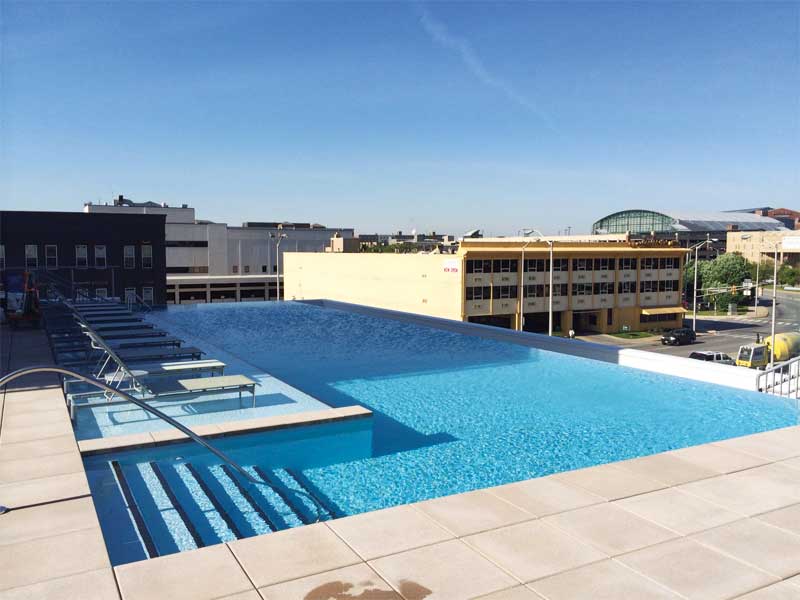 [1]
[1]Artistry is a creatively revitalized mixed-use apartment complex in the Cole Noble district of downtown Indianapolis. Its architecture, modern features, and appreciation for the arts come from the community’s history of craft and skill. The main building features five storeys of urban apartment homes and 6,317 m2 (68,000 sf) of commercial office space. Two additional buildings provide further living options to suit different lifestyles, including eco-suites for those who need minimal space.
One of the main highlights of this fun and creative development is its rooftop infinity pool, which is accompanied by a sundeck offering sweeping views of the city’s skyline. This particular pool was constructed of stainless steel, a building material that was selected for many reasons, including speed of installation, structural strength, and minimal weight. The use of stainless steel also earned the building Leadership in Energy and Environmental Design (LEED) points.
The project
In residential developments, the pool often becomes central to the community. These projects are put out to tender and the aquatic facility portion is generally subcontracted to expert pool builders.
This particular project, run by MS Operation Center Partners, had a strict budget and timeline. The firm knew the client did not want a very large pool, but rather a design that would complement the modern, esthetic of the apartment building.
Milhaus Construction had already installed a stainless steel, elevated pool once before for MS Operation Center Partners on a different project and were pleased with the results. When the Artistry project came up, they leaned heavily on the pool manufacturer to take the lead on the design. After reviewing the overall look of the project and its urban setting, a vanishing-edge pool design was proposed and accepted. Because the residents of the apartments are mostly young professionals working downtown, the pool, which features walk-in-stairs, is more of a social gathering space, rather than a recreational facility. In addition to the vanishing edge, a large sun-shelf area was included where loungers could be placed in 152 mm (6 in.) of water, allowing residents to relax within the pool next to the deck.
The 6.1-m (20-ft) wide by 12.2-m (40-ft) long pool was installed on the building’s third floor, allowing residents whose windows overlooked the feature to enjoy the vibrant atmosphere.
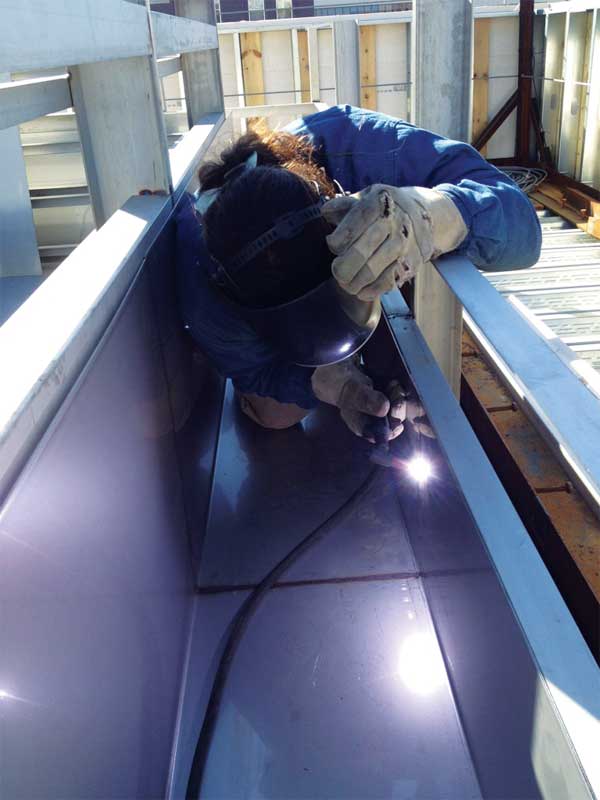 [2]
[2]The mechanical room was placed directly below the pool creating a streamlined recirculation system that minimized the need for any special mechanical engineering. The design takes advantage of the building’s existing structure to reduce cost and maximize efficiencies. The smaller pool size was optimal, as the local building code requires 1.2 m (4 ft) of deck around the entire pool, which was easy to include beyond the pool’s vanishing edge. It also provided plenty of room for an outdoor cooking, pergola, and seating area adjacent to the pool.
The installation
Installing elevated pools using traditional building materials such as concrete can be challenging, as they are located high up within the building. Pumping up concrete, maintaining the right moisture content, and ensuring it cures properly are all difficult factors to control, as there are always inconsistencies that need to be managed.
One of the many advantages of using stainless steel on this project was that all welding was completed in place, which allowed adjustments to be made due to any inconsistencies or changes in the structure of the building.
“Concrete vaults are often not level and it’s very difficult to adjust in these cases,” said Gregg Hendershot of Milhaus Construction in Indianapolis, Ind.
Concrete is 10 times heavier than steel; therefore, the total combined weight of the basin and the pool would require the building’s structure to be reinforced to hold the additional weight. As stainless steel is self-supporting, the pool did not require the construction of a basin. Instead, it was built solely on I-beams for structural support.
“A concrete pool would require a steel corrugated layer with an additional concrete topping slab at least 152- to 203-mm (6- to 8-in.) thick, plus waterproofing, and then the concrete vessel, which would be another 152- to 203-mm (6- to 8-in.) thick,” said Stephen Crocker with CSO Architects Inc., also in Indianapolis. “A final layer of waterproofing within the pool is also required, which adds up to a lot of extra weight.”
As a result, the cost and time involved is considerably less when installing a stainless steel pool in these elevated applications. This material is also beneficial in regions where ground shifting is a problem or seismic activity is an issue. In these cases, the structural components of a stainless steel pool move with the building, providing much more ‘give’ than rigid concrete.
The pool surface
A completely watertight and cost-effective polyvinyl chloride (PVC) membrane was applied to the surface of this particular installation. In some cases, high-end pool designers prefer not to cover the stainless steel with a cosmetic surface. Other designers like to line these pools with ceramic tiles or even marble.
The PVC membrane surface was selected because of its low-cost, flexibility, and striking blue colour. The PVC membrane also creates a soft surface for bathers, making it appealing for those who are mostly sitting and standing in the pool, as opposed to swimming. These 60-mil reinforced PVC membranes are watertight, slip-resistant, durable, and easy to maintain.
| Forging a work of art |
|---|
Growing demand
The use of stainless steel to build pools, particularly in elevated situations, has grown exponentially in the past decade. In fact, as architects and engineers become increasingly aware of the benefits of stainless steel as a pool building material, it is specified more often.
Today, these pools are in high demand for luxury condominiums featuring rooftop pools, as they are certain not to leak into the multi-million dollar penthouse units below. This type of PVC-lined stainless steel pool is not subject to cracking, peeling and/or leaking, which can be problems associated with other pool construction methods. Further, regular maintenance to ensure the integrity and beauty of the pool structure is minimal, which helps reduce operational costs. Another reason why architects and/or designers who are planning to include a pool—in any elevated situation—should look more closely at using stainless steel is that there are no limitations to the pool’s size or shape.
 [3]Gary L. Novitski is the vice-president of the commercial division of stainless steel pools and spas for RenoSys Corporation[4] in Indianapolis, Ind. He has more than 15 years of experience in the commercial aquatics industry. Novitski can be reached via e-mail at garyn@renosys.com[5].
[3]Gary L. Novitski is the vice-president of the commercial division of stainless steel pools and spas for RenoSys Corporation[4] in Indianapolis, Ind. He has more than 15 years of experience in the commercial aquatics industry. Novitski can be reached via e-mail at garyn@renosys.com[5].
- [Image]: https://www.poolspamarketing.com/wp-content/uploads/2017/11/Artistry4.jpg
- [Image]: https://www.poolspamarketing.com/wp-content/uploads/2017/11/Artistry30.jpg
- [Image]: https://www.poolspamarketing.com/wp-content/uploads/2017/11/Novitski_Headshotx.jpg
- RenoSys Corporation: http://www.renosys.com/
- garyn@renosys.com: mailto:garyn@renosys.com
Source URL: https://www.poolspamarketing.com/trade/features/case-studies/infinity-rooftop-pool-key-success-downtown-apartment-complex/

